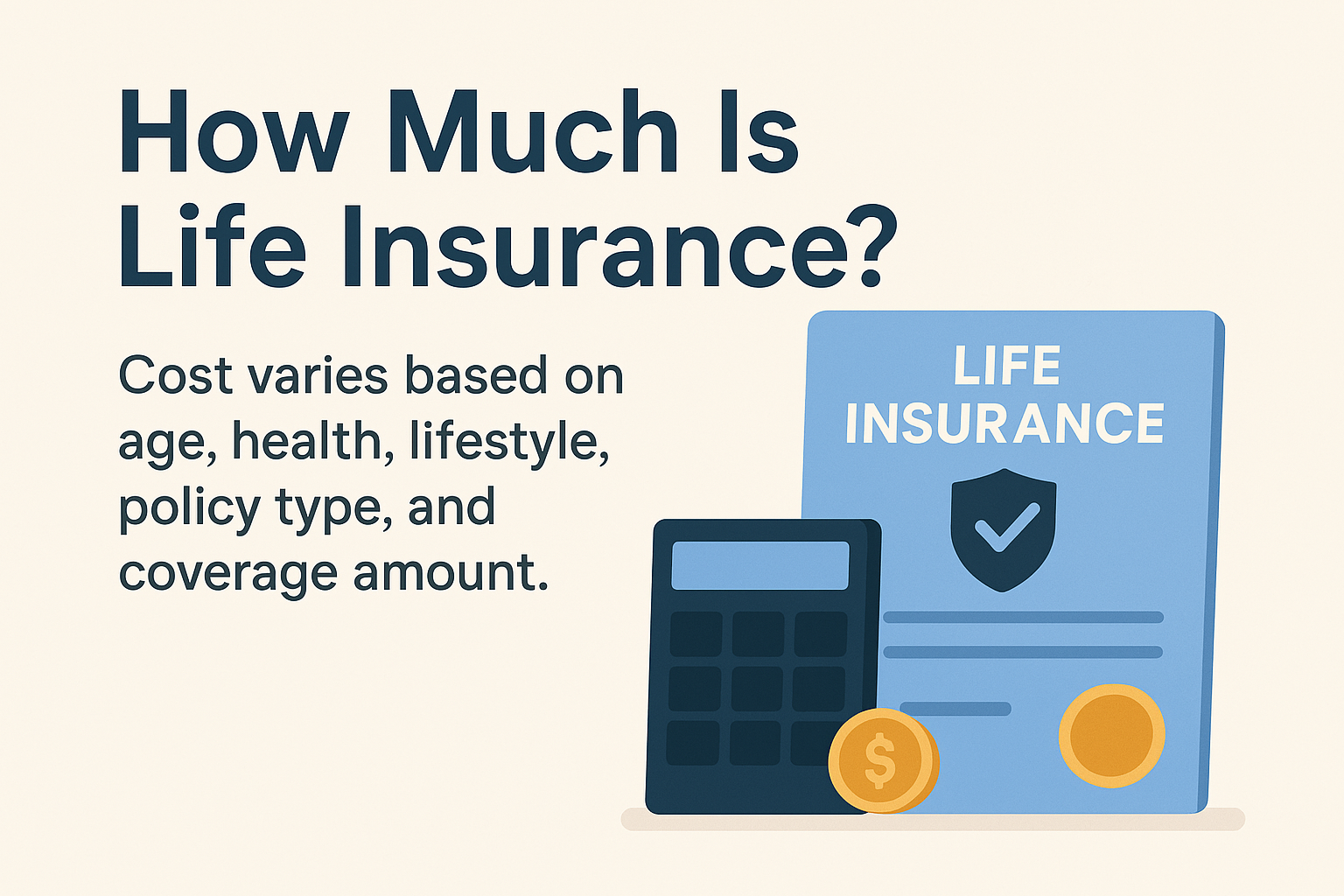
One of the most common questions people ask is, “How much is life insurance?” The answer isn’t as simple as a single price tag—it varies widely based on factors like your age, health, lifestyle, type of policy, coverage amount, and even the insurer you choose. In this guide, we’ll break down these key factors, offer some ballpark figures, and help you understand what influences the cost of life insurance so you can make an informed decision.
Factors That Affect Life Insurance Costs
1. Age and Health
Age is one of the most significant factors in determining your premium. Younger individuals generally pay lower premiums because they are statistically less likely to pass away during the policy term. For example, a healthy 30-year-old will typically pay much less for a $500,000 term life policy than a healthy 50-year-old.
Your health and medical history also play a crucial role. Insurers will review your medical records, conduct a physical exam, and ask questions about your lifestyle (including habits like smoking or drinking). A clean bill of health can lead to more favorable rates, while any existing conditions or risky habits can increase your premium.
2. Policy Type: Term vs. Permanent
Term Life Insurance
Term life insurance is generally less expensive because it offers coverage for a specified period (e.g., 10, 20, or 30 years) without accumulating cash value. Since it is “pure protection,” the premiums are lower. For example, a 30-year-old non-smoker might pay anywhere from $20 to $30 per month for a 20-year term policy with a $500,000 death benefit, depending on the insurer and other factors.
Permanent Life Insurance
Permanent policies, such as whole life or Indexed Universal Life (IUL) insurance, provide lifelong coverage and build cash value over time. Because they offer an investment component along with protection, their premiums are significantly higher. The cost for a permanent policy can be several times that of term insurance. For example, the same 30-year-old non-smoker might pay $200 or more per month for a comparable death benefit in a whole life policy.
3. Coverage Amount
The higher the death benefit, the higher your premium. If you need coverage to protect a large estate or to replace a significant portion of your income, expect your premiums to be higher. Insurers calculate the risk based on the amount of money they’d potentially have to pay out upon your death.
4. Term Length
For term life insurance, the length of coverage directly affects the premium. Longer-term policies cost more because they extend the risk period. A 30-year term policy will generally cost more than a 10-year term policy for the same death benefit and applicant profile.
5. Lifestyle and Occupation
Your occupation and lifestyle can impact your rates. People in high-risk jobs (such as construction or mining) or those who participate in risky hobbies (like skydiving or scuba diving) are often considered higher risk by insurers, leading to higher premiums. Conversely, a safe lifestyle with minimal risk factors can help you secure lower rates.
Ballpark Figures: What You Might Expect to Pay
While exact premiums will vary, here are some rough estimates for a healthy individual:
- Term Life Insurance (20-30 Years):
- A healthy 30-year-old non-smoker: Approximately $20–$30 per month for a $500,000 death benefit.
- A healthy 50-year-old non-smoker: Premiums can increase to $100–$200 per month for the same coverage.
- A healthy 30-year-old non-smoker: Approximately $20–$30 per month for a $500,000 death benefit.
- Permanent Life Insurance:
- For a whole life policy, the same 30-year-old might pay $200 or more per month for a comparable death benefit.
- Rates for permanent policies are generally higher due to the cash value component and the lifelong coverage they offer.
- For a whole life policy, the same 30-year-old might pay $200 or more per month for a comparable death benefit.
These figures are estimates and can differ based on the specific insurance company, policy features, and individual circumstances.
Tips for Getting the Best Rates
- Improve Your Health:
Maintaining a healthy lifestyle, quitting smoking, and keeping chronic conditions under control can lead to lower premiums. - Compare Quotes:
Use online tools like PolicyGenius or NerdWallet to compare rates from multiple insurers. - Consider Your Needs:
Decide if you really need permanent coverage or if term life insurance will meet your needs. Term policies are more affordable, while permanent policies offer additional investment benefits. - Review Your Coverage Regularly:
As your life circumstances change, so too may your insurance needs. Periodically review your policy to ensure it still aligns with your financial goals.
Conclusion
The cost of life insurance varies depending on many factors—from your age and health to the type of policy and the amount of coverage you choose. While term life insurance is typically more affordable and straightforward, permanent life insurance offers lifelong protection and cash value growth through compound interest. By understanding these factors and comparing quotes from reputable sources, you can find a policy that fits both your budget and your long-term financial goals.
For more detailed information on life insurance costs and guidance on choosing the right policy, check out resources like Investopedia’s Life Insurance Guide and PolicyGenius. With the right approach, you can secure financial protection for your loved ones while making an informed investment in your future.
Discover the right balance between cost and coverage to ensure your life insurance meets your financial needs today and into the future.





